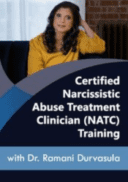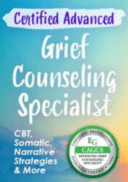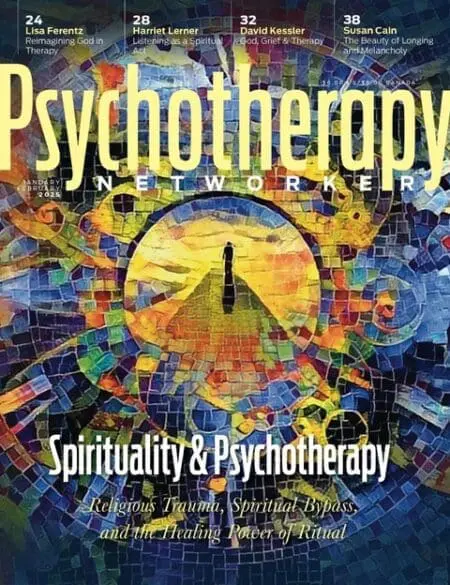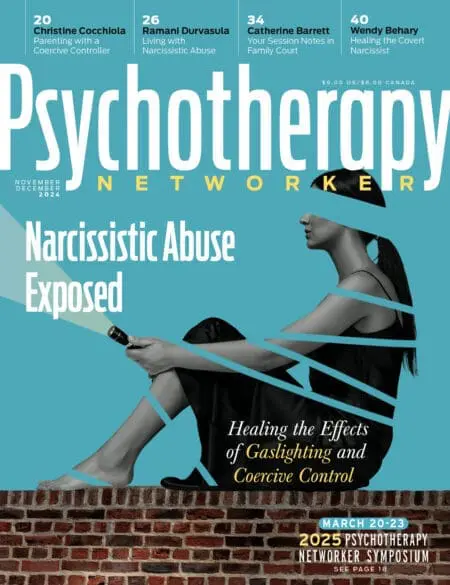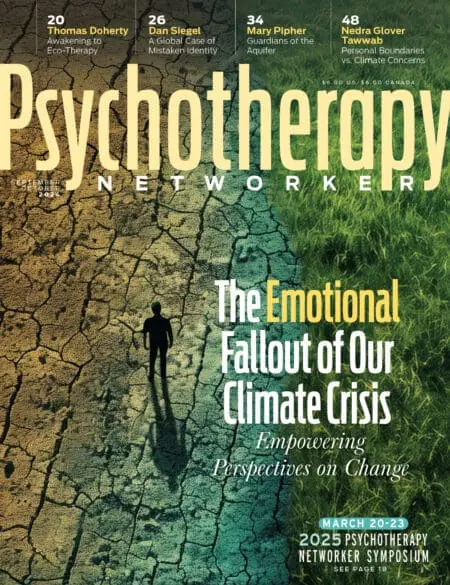Most therapists are taught to take an affirming, hands-off approach when clients bring up religion, which is often considered a prosocial or supportive factor, something that grounds people in a sense of identity, community, and a higher purpose.
But as a therapist who specializes in religious trauma, I’ve seen firsthand how religion can disconnect people from themselves. And many of my clients, and those of my supervisees, are quite clear about the harmful effects of experiences they’ve endured within high-control religions they were born into and never formed an identity outside of it until they made the choice to leave as adults.
Although some of my clients can point to specific instances of overt danger or overwhelm, most say there wasn’t a single event attached to their trauma. Rather, the teachings, practices, and beliefs they were steeped in simply kept their nervous system on high alert all the time. This was their normal state: they felt threatened and overwhelmed.
Does it sound like I’m describing complex trauma? I am. As I’ve learned over the course of my career, religious trauma is trauma. But sadly, when religion is involved, even trauma-trained therapists seem to have a blind spot. Recently, a client, who came to me after hitting a wall with one of these well-intentioned therapists, said, “You have no idea how painful it is to have to convince your therapist that what you went through wasn’t just a bad church experience.”
Like many therapists, my foray into my clinical specialty began after realizing how deeply I resonated with certain experiences I heard from clients. Like them, I was working to heal—physically, relationally, and psychologically—from the impact of my highly controlled religious upbringing. In fact, some days, it felt like I was just a step or two ahead of them in my journey.
Then, during Donald Trump’s first campaign for presidency, many folks on social media began voicing disillusionment with their churches and pastors for supporting him—after all, Trump wasn’t a religious man, and his actions could easily be considered antithetical to most religious teachings. It opened the door for other conversations and questions around religion. Religious trauma became a hashtag and a frequent talking point for the therapeutic community.
In turn, I started using my own social media platform to talk about religious trauma as I saw it: complex trauma. I wanted to raise awareness about the fact that even when people reject and question certain principles, practices, or structures, the indoctrination they’ve endured lives on in their bodies. As with all trauma, religious trauma is a physical, emotional, or psychological response to a perceived threat that can overwhelm the nervous system. It interferes with a person’s ability to cope and experience safety. You can’t think it away—it must be somatically resolved.
The distinction between spiritual abuse (also a buzzword) and religious trauma is that abuse can but doesn’t always result in trauma. Most people recognize spiritual abuse in egregious events like a member of the clergy sexually abusing a child. But in many cases, it’s more insidious and covert. I like psychologist Hillary McBride’s definition of it: “when someone hands you an inner critic and tells you it’s the voice of God.” This transfer can happen in seemingly unremarkable, everyday interactions, such as a parent or authority figure telling you that you’re sinning when you masturbate or feel attracted to the “wrong” people. Or it may result from being told that not accepting certain religious teachings will earn you a life of eternal conscious torment in hell.
I receive hundreds of inquiries a year from people who feel traumatized by their religious experiences, including those within cults, but can’t understand why, despite rejecting their former belief system, they’re still experiencing hypervigilance, flashbacks, difficulty in their relationships, chronic illness and disease, anxiety, and depression. The 2,500 people who responded to an exploratory survey from the Religious Trauma Institute, which I cofounded, reported lasting impacts of adverse religious experiences like feeling chronically unworthy, overwhelmed, paralyzed, isolated, distrustful, disconnected from their bodies, unsafe, tense, hopeless, and confused. The top three lasting impacts identified were fear, powerlessness, and shame.
Body-based trauma resolution modalities that center the nervous system, like Somatic Experiencing and Trauma-Informed Stabilization Techniques, are critical in helping these clients build skills around grounding, orienting, embodiment, and safety. They may also need our guidance learning about setting boundaries, communicating their needs and feelings, differentiating from other people, thinking flexibly, embracing sexuality, being a parent, and learning to reparent themselves. As therapists, we’re well-equipped to help clients do this kind of work, even those among us who’ve never set foot in a temple or church or spiritual center.
Laura Anderson
Laura Anderson, PhD, LMFT, is a therapist, trauma resolution and recovery coach, and educator who specializes in complex trauma with a focus on domestic violence, sexualized violence, and religious trauma. She’s the founder and director of the Center for Trauma Resolution and Recovery, the cofounder of the Religious Trauma Institute, and the author of “When Religion Hurts You: Healing from Religious Trauma and the Impact of High Control Religion.”









